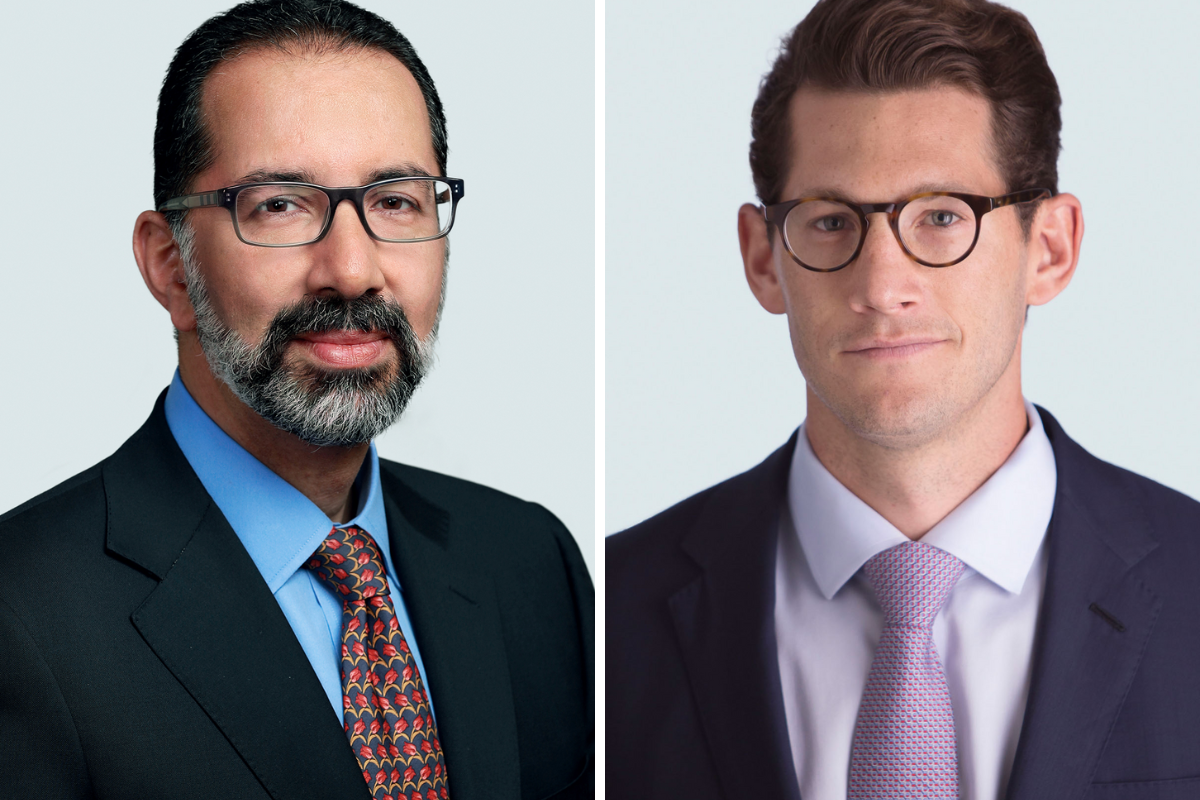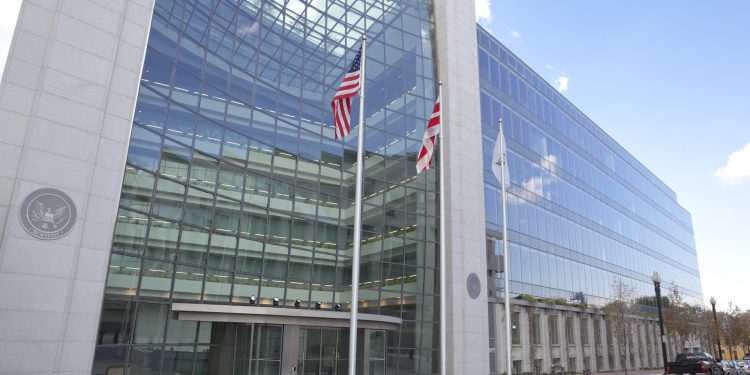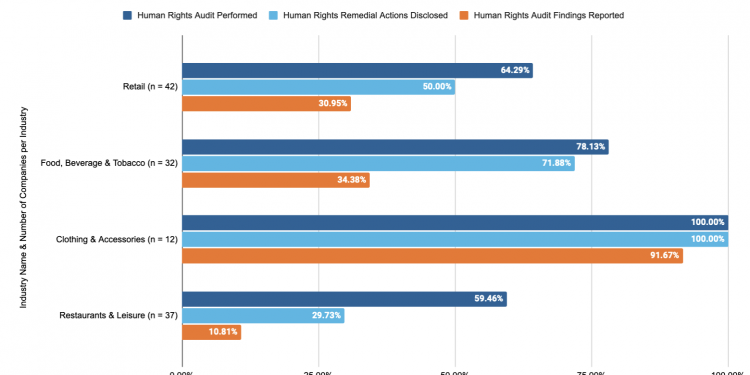State Street Global Advisors’ CEO and Head of Asset Stewardship Talk Proxy Season, the State of Energy Amid Ukraine War, and the Future of ESG


The past few years have marked a generational shift in what it means for investors and companies alike to embrace ESG – environmental, social, and governance – factors, and among the most influential movers has been State Street Global Advisors. When we spoke last week with the giant asset manager’s CEO, Cyrus Taraporevala, and global head of asset stewardship, Benjamin Colton, the world was now contending with the ways the Russia-Ukraine war was going to affect ESG’s role in the future of business.
In his annual proxy voting guidelines letter to board directors of SSGA’s portfolio companies, representing more than $4 trillion in assets under management across 2,100 clients in 58 countries, Taraporevala asked readers to recognize the urgent need for clean energy transition clarity. He and Colton, who oversaw the development of this year’s guidelines, told us in our discussion that even though they sent the letter and guidelines in January, their guidance has not changed.
That’s because even though the war, the COVID pandemic, a reckoning with racial injustice, and alarming climate research have pointed out specific ESG risks, they’ve also highlighted that ESG is core to holistic investment strategy. As Taraporevala told us, “it’s very sloppy shorthand” to say that traditional “financially important metrics are somehow separate from ESG” with an ESG lens constantly shifting to meet an immediate ideological concern.
We discussed with Taraporevala the guiding principle of “value, not values” that he’s used in his six-year tenure as CEO (ending with his retirement later this year) and with Colton why and how SSGA has been a leading investor voice on increasing corporate diversity and transparency around it, and what both want and expect from this year’s proxy voting season, kicking off in April. Watch the full conversation below, and sign up for The JUST Report to get access to exclusive bonus clips not featured in the full interview:
The following interview has been edited for length and clarity.
JUST: I would say it’s safe to say that when you set up these guidelines for the year, that you likely weren’t predicting global conflict with Russia and a war going on in Europe. Does this war change your advisory or overall investment strategy for the near or long term?
Cyrus Taraporevala: When it comes to our proxy guidelines and ESG issues, by definition these are long-term issues that go over many, many, many years. We don’t react to things in the moment. Of course, what’s going on, like so many other things, does change our investment philosophies and tactics in the moment, including the fact that Russian securities are basically untradeable. But that’s separate and distinct. We will do what we need to do for our clients in the moment, but I just want to draw a distinction between the two topics.
JUST: Does there need to be a new set of expectations around the energy transition? With that being so fundamental to long-term climate strategies, and this conflict throwing the entire balance of oil and gas supplies around the world into disarray, how does that affect what you’d be advising to companies? Are these conversations that you’re having?
Taraporevala: In a sad way, because this conflict is terrible and tragic from a human perspective, it actually just reinforces what our proxy letter talked about when it comes to climate. We are pushing our portfolio companies to tell us not whether they want to get to net zero, but also as importantly tell us how are they going to get there. We also spend a lot of time talking about two concepts that I want to make sure you understand.
The first, which is very apropo of what you’re talking about, was this point that demonizing the fossil fuel industry and having this simplistic “green is good, brown is bad” approach was not something we subscribed to. We wrote about it in early January – we weren’t waiting for a war to talk about it. Our view is we are going to need fossil fuels for quite a long time through this transition. We believe the oil and gas companies are going to be part of the solution. They need to be part of the solution, so we need to engage with them. We need to work with them, support them, as they go through their transitions. And green versus brown is too simplistic. Think of it as a color spectrum, if you will. You’ve got dark brown – dare I say, dirty brown – forms of thermal coal, all the way to very light brown, think natural gas. And you’ve got green. You’re going to need some form of the lighter browns for quite a long time. And as I said, it’s sad but true, this recent conflict only reinforces and underscores that.
The second point we made about climate is this notion of what I coined in an op-ed in the FT last year “brown-spin.” Now, we all know what greenwashing is, right? So brown-spinning is basically where the pressure on publicly traded companies is becoming so heavy that they are looking at their highest emitting assets and basically saying, “You know what, I’m just going to sell them, get them off my books. I don’t have to deal with this topic of conversation with my shareholders.” But what does it really accomplish? Ultimately, they’re being sold to either private equity owners or some other form of maybe a state owned enterprise, or a hedge fund, et cetera. And in many cases, the level of emissions for the planet not only stays the same, but actually may increase because the new owner cares even less about it and doesn’t have the same pressures that a public company would have to make a transition on those emitting assets. Tragically for the shareholder of a publicly traded company, it’s often sold at a discount, i.e. the buyer sees a wonderful IRR.
So you have the worst of all worlds. You have the planet no better off, potentially worse off, and you definitely have the shareholder worse off. So what have we really accomplished? The frame I used in op-ed was imagine the world in 2050, where every publicly traded company can say they’re at net zero and have no emissions, but the total amount of emissions in the air and on the planet are the same.
These are themes that we have been talking about for a long time, and again, this current conflict simply underscores them.
JUST: Do you think that as it underscores it, it also sets back the timeline?
Taraporevala: I don’t know about that. I think it’s too early in this moment and probably very speculative depending on what scenario comes to pass. Right now when it comes to this conflict, our focus is on our clients and our people. We have quite a lot of people in Europe, people not too far from Ukraine and Poland, and people all over the world with family ties and loved ones there. The rest will come.
SSGA’s guiding principles
JUST: Can you tell me how the proxy voting priorities have changed over your tenures at SSGA and what stands out as unique about 2022’s guidelines?
Taraporevala: There are three core beliefs that we hold very strongly to.
The first is that strong, capable, and independent boards are truly the linchpin for driving long-term shareholder value, and that has not changed. We are steadfast in that belief.
The second is that when it comes to our asset stewardship activities, it is about value, not values. And this is a difficult one because we all do have values. We’d love to espouse them, but when it comes to other people’s money, which we are the fiduciary for, we have to ask ourselves, how does this drive value? How does it either increase the returns or mitigate the risk? That is our North Star.
And then the third, starting to get to the other part of your question, is we’ve been at this for a long, long time. We’ve been at many of the topics we are talking about in our proxy letter for well over a decade. We have been pushing our portfolio companies to improve their disclosure on topics that we believe, in addition to the more traditional financial metrics, do drive long-term risk-adjusted value. We’ve been pushing them on effective board oversight.
So if you just do a quick checklist of what’s stayed the same, what’s changed, and how has it evolved? You could say broadly on ESG that “G” is the furthest along. That’s where a lot of this started. And really, this goes back to Graham and Dodd. Well-managed companies with good boards do better and should be accorded a premium. There’s nothing particularly “ESG” or new about it. On climate, we have believed for a long time in the systemic risks around the “E.” But I would say certainly the level of focus and emphasis more broadly has increased over the years, and we think will continue to increase over the years. And the “S” is probably the epicenter of where the greatest change has happened over the last several years.
We’ve been ahead of the curve in terms of asking our portfolio companies for more disclosure on human capital management, but I would say all else being equal, the clarity of our expectations has increased. The way we are holding boards accountable, using not just our voice, but even our vote, that has gotten sharper.
When we think about our proxy guidelines, we don’t actually start with what’s going to be unique and super different every year. In some ways that would drive our portfolio companies crazy and is not really in the best long-term value creation interest. They are slow burn issues that take years, and we want to signal to our portfolio companies well in advance that these are the issues we’re going to talk about. We believe consistency is a good thing, because otherwise you just rip some of your portfolio companies around and nothing happens year over year.
Ben Colton: In the past decade, we said that climate change is a material risk for all companies, that it’s an issue that belongs with the board, and we published guidance on effective oversight of climate change and climate-related risk. And this year we’ve escalated it to really articulate what we’re expecting from a climate transition plan. We’re going to have targeted engagement campaigns on some of the most heavy emitting companies in our portfolio.
You can also see this on the social side. When we launched our Fearless Girl campaign, which held companies accountable for having at least one female director on the board, it wasn’t about having a token female director, this was really about diversity in thought – a critical mass of diverse perspectives that lead to benefits of seeing risk differently and having less groupthink, more innovation, and better business outcomes overall. We’ve escalated our expectations for companies not only on gender diversity, but to have directors from underrepresented communities. This year our voting guidelines expect 30% female representation on boards in addition to one director that’s from an underrepresented community, in developed markets, and the expectation of one female director is expanded to all markets.
The other trend that we’re seeing is a lot of blending between the issues. We’re seeing how corporate governance issues are also mixing with environmental and social issues. How does the board oversee a climate transition, or think about risk management related to racial and ethnic diversity, and human capital management? We’re also seeing shareholder proposals asking for more disclosure on how the board is overseeing these issues. And with a just climate transition, that’s a combination between social and environmental issues. How are our companies thinking about the transition and also about their workforce and the communities in which they’re operating in that context? How are they going to reskill and retool their employees when their business lines change? How are they going to think about those communities in which they’re impacting and operating within?
‘Value, not values’
JUST: Something that tie this all together is, Cyrus, what you said about value, not values. Can you unpack that a bit? Every week you’ll see debates around, “Oh, is this ‘woke capitalism,’ are companies getting too ideological?” And you see pushback from either side, from those saying companies aren’t doing enough to those saying they’re doing too much.
Taraporevala: Look, that narrative is definitely out there. But as I said, for us, this is not about politics. This is not about what’s “woke.” This is about the best risk-adjusted return. A huge part of our business is indexed assets. And in many ways, index equities are quasi permanent capital. As long as the company’s in the index, my index managers, unlike my active managers, have to hold that company in their portfolios, which means they don’t have the luxury of saying, “I don’t like what’s going on, let me just press a button, let me get out.”
And for some strange reason, my clients don’t like the S&P 499 worth of returns, they expect the S&P 500 worth of returns. So we have to engage with these companies, we have to think about the long-term risk adjusted returns.
For us, this “value not values” compass really helps us. It’s human, it’s natural, to want to sometimes have your values reflected. But we have to catch ourselves and say, no, no, no, that’s not this topic. We have to focus on value. We don’t subscribe to the idea this is political, and it’s actually a shame that narrative is being framed as such.
JUST: Reading the guidelines and hearing everything that both of you are saying, these arguments are very much tied back to a common sense assessment around risk and value creation. A lot of what this would be considered though, too, is ESG. Is it still useful now in 2022 to consider ESG as an alternative lens to assessing a company, or are lines blurring between what is just smart management, smart investing, and what is ESG?
Taraporevala: We’ve never actually bought into this ESG/non-ESG dichotomy. It’s just not binary. Here’s the way I think about it. An investor puts together a rich mosaic of different data and information that drives her decision about whether or not to invest in a company. (And I’m purposely focusing on the active side for this part of the conversation.) Different investors can look at that same rich mosaic of data and information and reach different conclusions. That’s cool. My equity value managers have a very different portfolio than my equity growth managers. So we are not suggesting the answer needs to be the same, but we do believe that having the right data and information disclosed is important, from which different people can reach different conclusions. That’s the wonderful thing about markets. It’s very sloppy shorthand to say financially important metrics are somehow separate from ESG.
There are traditional financial metrics – think FASB. And there are ESG metrics that also ultimately drive risk-return tradeoffs, so they are very meaningful financially. To us, it’s putting it all together. For example, when we engage with our portfolio companies, we don’t have just our asset stewardship team engaging with companies. We have our portfolio managers on the active side, side by side with our asset stewardship team at meetings with companies, and when the time comes to decide our votes, there’s a discussion and perhaps even a debate among our folks.
My hope, maybe it’s my naive dream, is that in seven to 10 years, and I fear it might take that long, we’re not even talking about ESG as a separate thing.
When I go around the world, I don’t have clients say to me, “Do you think about price to earnings? What about dividend yields? How are you thinking about price to book?” That’s part of the mosaic, right? And just given the newness of ESG, parts of it do feel a little different, and it’s going to take a little time for folks to adjust to it. But again, I go back to governance. I grew up studying Graham and Dodd, and it was always very clear that good companies should be accorded a premium and governance was part of what a good company was. Good management, good boards. So we never said, oh, but that’s separate, let’s take that out of the regular Graham and Dodd analysis and have it in a separate bucket and we’ll come up with different portfolios based on that.
Colton: One of the crucial factors of this ESG discussion is more quality and consistent data, as well. As we have more historical data, as we all coalesce around common standards – we think SASB is a really good starting point – that conversation will continue to evolve as we get more clarity around how we’re measuring outcomes. We joked one time with a company, where they said the quickest way that we’re going to reduce our carbon emissions is by just changing our data provider. And that shouldn’t be the case, but sadly that is the reality.
We can’t even get consistency among the same data points that we’re looking at. But we do think that is improving, and one of the ways to continue to get more consistency is by having asset managers and asset owners be clear on what their expectations are, be clear to companies on what kind of disclosure they want to see and what’s going into their analysis. How are we thinking about net zero as an asset manager and what kind of disclosure do we want to see? We need to understand the guardrails, and the interim goals of achieving those long-term expectations.
What the ‘S’ means in 2022
JUST: You mentioned how much the “S” has changed in recent years. Can you tell me how State Street defines it now?
Colton: Cyrus’s letter three years ago underscored the importance of board oversight responsibility in thinking about corporate culture. That is so closely connected with human capital management. How is the board monitoring, enhancing, and overseeing corporate culture? How are they holding management accountable for identifying hotspots within their organization, or integrating the voice of employees and using not only the risk KPIs, but also synthesizing information? What a company needs to be successful for the next 10 years is probably known somewhere within the organization already. How do we track that information and how does the board utilize their employees to the fullest?
Now we’re also seeing the Great Resignation, and this competitive landscape for talent, and also a work from home environment for many companies. Attracting and retaining talent and creating a corporate culture, maybe in an untraditional way, is more important than ever. These are the types of things that we’re talking about with companies, and we’re trying to be clear on what our expectations are and what kind of disclosure we want to see. And that really comes through in some of those guidance pieces that were attached to Cyrus’s letter this year.
JUST: On that note of how companies are navigating the challenges around labor over the last year, where there really seems to have been a shift in dynamic between workers and management of companies, what are you advising in regards to how much a company should be investing in its workforce while also navigating the fears of inflation and the overall difficulties of this economy?
Taraporevala: We are mainly asking questions of companies – we are not here to dictate. That’s between management and their boards. How are you thinking about it? How important is talent and labor to being able to enable your strategy? Where are you seeing the major pressure points? How is your attrition? How is your ability to attract new talent? How is your ability to attract diverse talent? We hold boards accountable, boards hold management accountable.
JUST: Target announced in their last earnings call they are planning a major investment in their workforce, where starting salaries are going to range from $15-24 an hour. Other companies have made similar investments recently. Do you expect to see more companies investing in their workforce in this moment?
Taraporevala: I’m not commenting on individual companies, but will talk generally.
I don’t really buy into this narrative of companies are now suddenly, over the last one or two years, investing in their workforce. We believe great companies have invested in their workforce for a long, long time. The specific tactics may vary, but investing in the workforce – which is a lot more than just compensation, it’s about helping people think about their careers, it’s about advancing their careers, it’s about mobility, it’s about the culture of the organization to attract, retain, and motivate a great workforce – that’s always been a huge competitive advantage for some companies.
JUST: Ben, broadly speaking, what do you expect of this year’s proxy season? And should we expect some more ESG-centric battles similar to what we saw with Engine No. 1 and ExxonMobil last year?
Colton: That was really about long-term strategy and finding and determining which directors are best suited for overseeing such strategy. What I will say is that as human capital management becomes more and more important, and get more disclosure around those issues or see the lack of disclosure from some companies, I would suspect that you’re going to see the social issues appear more and more in those discussions when you see contested situations, because it really is a material issue for all companies.
JUST: So issues like around pay or gender diversity, equity, inclusion, those types of issues.
Colton: I think broadly human capital management, how a company is looking at their workforce, its composition, all of the issues we’ve underscored as material. I would expect to see companies disclosing more information, and also in those contested situations, that information being further up in the pitch deck, so to speak, than it was in the past.
We filmed this interview and will be releasing clips like the one below, along with a lightly edited full Q&A video, including material not included in the above feature. To make sure you don’t miss any, subscribe to our newsletter and follow us on Twitter and LinkedIn.






